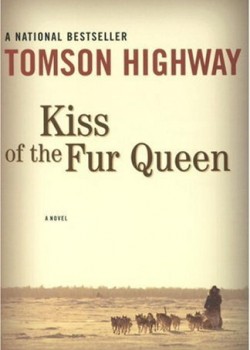Deborah Young’s reading for the new year
UM Today checked with Deborah Young for some reading to open the new year. “Difficult to narrow it down to just five!” as she said — but here are the books she recommended.
 1. Decolonizing Education: Nourishing the Learning Spirit by Marie Battiste. A powerful and informative book on why it is important for all levels of schooling — elementary to university and colleges — to undergo transformative change that focuses on sharing Indigenous knowledge and world views in all forms of learning and teaching. One of my favorite books.
1. Decolonizing Education: Nourishing the Learning Spirit by Marie Battiste. A powerful and informative book on why it is important for all levels of schooling — elementary to university and colleges — to undergo transformative change that focuses on sharing Indigenous knowledge and world views in all forms of learning and teaching. One of my favorite books.
More about the book
Drawing on treaties, international law, the work of other Indigenous scholars, and especially personal experiences, Marie Battiste documents the nature of Eurocentric models of education, and their devastating impacts on Indigenous knowledge. Chronicling the negative consequences of forced assimilation and the failure of current educational policies to bolster the social and economic conditions of Aboriginal populations, Battiste proposes a new model of education. The new model she advocates is based on her experiences growing up in a Mi’kmaw community, and the decades she has spent as a teacher, activist, and university scholar.
 2. The Inconvenient Indian: A Curious Account of Native People in North America by Thomas King. An easy read yet a powerful one. I laughed and cried while reading this book. A must read for everyone.
2. The Inconvenient Indian: A Curious Account of Native People in North America by Thomas King. An easy read yet a powerful one. I laughed and cried while reading this book. A must read for everyone.
More about the book
It won the 2012 RBC Taylor Prize National Award for Canadian Non-Fiction. Here’s hte citation: Histories of North America’s Native Peoples abound, but few are as subversive, entertaining, well-researched, hilarious, enraging, and finally as hopeful as this very personal take on our long relationship with the “inconvenient” Indian. King dissects idealized myths (noble Hiawatha, servile Tonto, the Sixties nature guru) against the tragic backdrop of real Indians abused in mission schools, penned together on reserves, and bludgeoned by vicious or ham-fisted government policies. A sharp, informed eye is cast on Riel, Crazy Horse, and Sitting Bull, on the dark and tangled stories of Native land claims, on Alcatraz, Will Rogers (a Cherokee), and the maid on Land o’ Lakes butter; on Batoche, on Wounded Knee. In this thoughtful, irascible account, and in characteristically tricksterish mode, King presents a provocative alternative version of Canada’s heritage narrative.
 3. Kiss of the Fur Queen by Thomson Highway. I read this book about 15 years ago and the beauty of the story remains fresh in my mind. I was emotionally moved by the fictitious story about the lives of two Cree brothers from Northern Manitoba. Touching, raw, real. I loved the journey.
3. Kiss of the Fur Queen by Thomson Highway. I read this book about 15 years ago and the beauty of the story remains fresh in my mind. I was emotionally moved by the fictitious story about the lives of two Cree brothers from Northern Manitoba. Touching, raw, real. I loved the journey.
More about the book
Writing in Quill & Quire, reviewer Suzanne Methot described Kiss of the Fur Queen this way:
Cree playwright/pianist Tomson Highway’s debut novel, is the story of champion dog-sled racer Abraham Okimasis and his sons Jeremiah, a pianist, and Gabriel, a dancer. As the brothers journey from northern Manitoba to residential school and then to Winnipeg, a mysterious trickster figure – the Fur Queen – plays witness to their lives. The resulting story is about sibling rivalry and sibling love, and the effects of re-education and religious conversion on one family’s existence.
In Cree cosmology, children choose their parents. Highway’s depiction of the brothers’ trapline births are among the most haunting and evocative pieces of writing to ever appear in Canadian literature. The playful yet hallowed tone of these early passages is pure magic.
It is impossible to dislike a book that brings a reader to tears (twice) by page 33.
 4. High Line: The Inside Story of New York City’s Park in the Sky by Joshua David and Robert Hammond. The High Line walkway is one of my favorite places to visit and when I read about the history of the High Line I was blown away. The book explains the long history of the High Line and how two local community organizers and residents of the area saved the space. It is a true testimony on effective community engagement, creating space, and land use planning.
4. High Line: The Inside Story of New York City’s Park in the Sky by Joshua David and Robert Hammond. The High Line walkway is one of my favorite places to visit and when I read about the history of the High Line I was blown away. The book explains the long history of the High Line and how two local community organizers and residents of the area saved the space. It is a true testimony on effective community engagement, creating space, and land use planning.
More about the book
The High Line is among the most innovative urban reclamation projects in recent memory. The story of how it came to be is a remarkable one: two young citizens with no prior experience in planning and development collaborated with their neighbors, elected officials, artists, local business owners, and leaders of burgeoning movements in horticulture and landscape architecture to create a park celebrated worldwide as a model for creatively designed and socially vibrant public space.
“High Line: The Inside Story of New York City’s Park in the Sky” tells the story of the project with more than 200 photographs documenting the High Line’s transformation and a narrative by Friends of the High Line co-founders Joshua David and Robert Hammond about how it all came to be.
5. A Room With a View by E.M. Forster. A classic love story. Timeless.
This 1908 novel is praised by readers and writers alike, and was adapted in 1985 into an award-winning film by Merchant-Ivory starring a radiant Helena Bonham Carter and the always-wondrous Maggie Smith. The novel opens in Florence (what’s not to like?), and follows Lucy Honeychurch’s awakening . Acclaimed novelist Zadie Smith loved the book so much that she gave an entire lecture on the novel, the 2003 Orange Word Lecture titled, “EM Forster’s Ethical Style: Love, Failure and the Good in Fiction. Here’s an excerpt from her Guardian published essay based on that lecture:
EM Forster’s A Room With A View was my first intimation of the possibilities of fiction: how wholly one might feel for it and through it, how much it could do to you. I felt it was very good and that the reading of it had done me some good. I loved it. I was too young, at 11, to realise serious people don’t speak of novels this way. Soon enough, though, I grew up and grew serious; I became intellectually responsive to the text. And as serious young adults, we are thrilled to be able to talk of theme, of the mechanics of plot and the vicissitudes of character. Maybe we continue this interest and take it further, deciding to study novels in earnest, or even teach them, review them, or write them.
A peculiar thing happens at this point. We find that our initial affective responses are no longer of interest to the literary community in which we find ourselves. We are as Heraclitus described us: “Estranged from that which is most familiar.” Suddenly this incommensurable “Love”, and this other, more vague surmise – that the novel we loved was not simply “good” but even represented a Good in our lives – these ideas grow shameful and, after some time, are forgotten entirely, along with the novel that first inspired them. For no sensation empirical as love can have any importance as a “response” to novels qua novels. Can it?
Deborah Young is executive lead, Indigenous achievement, at the U of M, and an alumna of the Faculty of Social Work.
>> See more Best of 2014 lists here.








